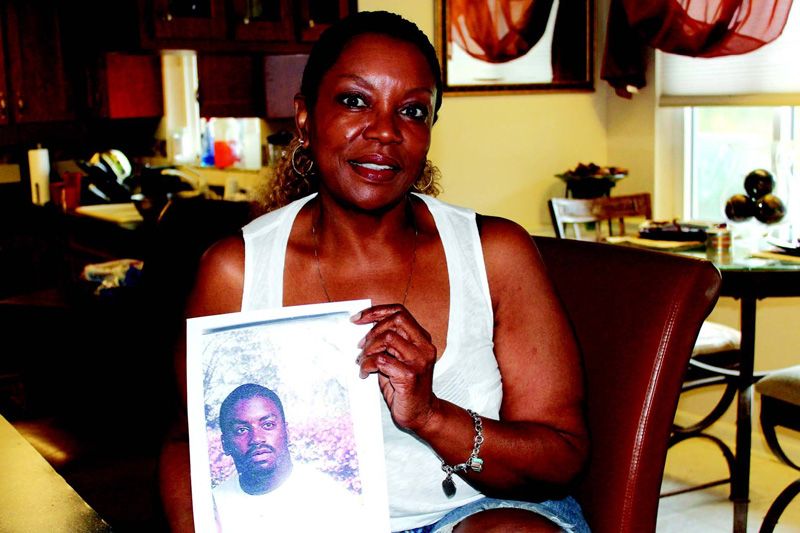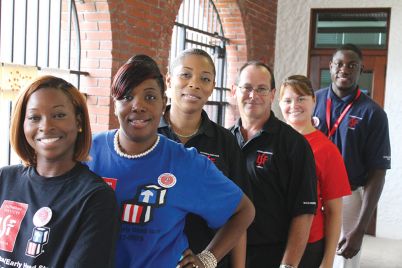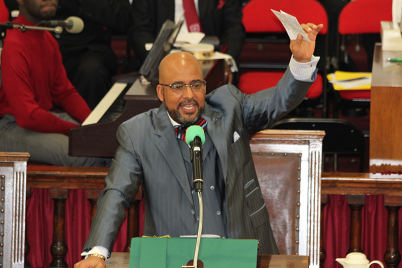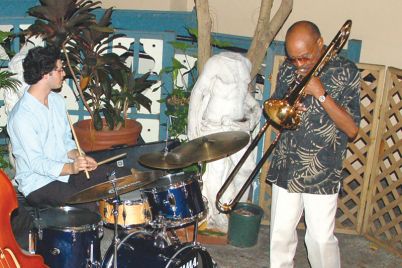Vel Thompson is on a quest to let America know that Stand Your Ground is not the only thing stealing the lives of African American teenagers in Florida. Her son, Michael Morgan, was taken from her over 20 years ago simply for being in the wrong place with a dark skin color.
Michael was 18 years old when he was riding his bicycle home from school that day. A man with a large dog started yelling at him and chasing him. Michael made it into a neighbor’s house and called his mom to come and help him. By the time Thompson reached him less than 10 minutes later, her nightmare was already unfolding.
“He was on the ground in handcuffs by the time I got there,” she said. “There was a policeman yelling at him and nobody would tell me what was happening. They just took him away.”
Over 20 years later, Michael Morgan is still sitting in a Florida prison for a crime that journalists, a county commissioner and even one of the other men found guilty say adamantly and publicly that Michael did not commit.
The incident happened in 1993 in St. Petersburg during one of worst periods for racial tension between police officers and African Americans in the city’s history. Riots would later erupt for two days in 1996 after Officer James Knight of the St. Petersburg Police Department shot and killed unarmed Tyron Lewis, who was 18 years old, during a traffic stop. A grand jury cleared Officer Knight of all charges.
Thompson relays when she feels like everything started to go wrong.
When Michael was 16 a man opened fire on him and a friend. Michael didn’t have a gun and ducked for cover. His friend attempted to return fire with his own gun and was hit. When the gun fell beside him, Michael picked it up and shot it toward the man.
Instead of a self-defense argument being presented to a judge, Michael’s designated lawyer recommended that he just plead guilty to attempted murder and serve a few months in a juvenile detention center. Fearful that he might face larger penalties if he fought the charges in court, Michael agreed.
To this day Thompson wonders if that legal advice was the first domino that caused things to topple.
“Should we have fought the charges because he was innocent? I don’t know. I just thought that it would be better if he got everything behind him as quickly as possible. I was focusing on how lucky he was to be alive at all. I never thought it would come up again since he was only sixteen,” she said.
Michael served his time and was released, but with a new skill set and a new set of bad influences. About a year later he was involved in an attempted robbery. According to Thompson, that arrest was the shock Michael needed to start putting his life back together. He rededicated himself to school and started making better choices. Soon, however, his fate would no longer be in his own hands.
The day that Michael was riding his bike home from school, police were on the lookout for a black male who was allegedly involved in an assault on a woman named Felicia Fuller, which had happened 12 days earlier. Fuller was shot in the buttocks once during what many described as a “drug deal gone bad.” Cocaine was found at the scene and she stated that there were two men, both African American, that assaulted her — one with a gold tooth and a second, a clean-shaven man.
A quick run-down of facts that exonerate should Michael:
- Michael has no gold tooth and had a full mustache at the time of his arrest.
- Michael has an alibi
- He was at a school dance with friends during the alleged incident.
- After the dance he went to his girlfriend’s home and called his mom to let her know that he arrived.
- Multiple witnesses could corroborate Michael’s story.
- No DNA evidence, forensics, ballistics tests or witnesses place Michael anywhere near the scene of the crime at any time before or after the incident.
For those still skeptical, here’s what should have been Michael’s saving grace:
- Both of the other men who were convicted for the assault, Gerald Wright, and the driver that night, Marva Davis, have sworn multiple times that the other suspect was absolutely not Michael.
- In fact, Wright went as far as to write a letter from prison, pleading for Michael’s release and stating that he didn’t even know Michael before this ordeal occurred.









our system sucks this man needs to b released and compensated for his losses if he is not innocent then nobody is in prison